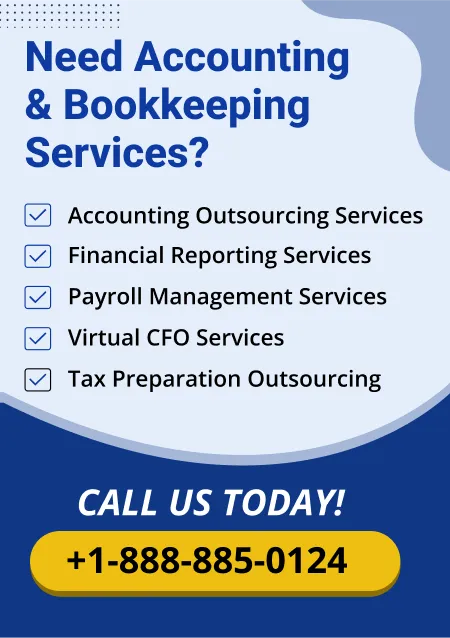Small businesses can often find payroll management knock-them-out due to its complexities. Payroll demands accuracy, complying to the law and time that can take a toll on businesses by drawing out time from other core business activities. These issues can be solved by payroll outsourcing, which opens up business assets to concentrate on growth while maintaining efficiency and compliance in payroll procedures. Outsourcing payroll services can preserve invaluable time, cut-costs and mitigate financial catastrophes. This articles provides a guide-book kinda formula to set up a successful payroll outsourcing for your small business.
Checking-out the payroll needs of your business
- Prior to outsourcing payroll, it's critical to fully understand the distinctive needs of your business. Assessing the business's size, workforce size, and payroll system complexity should be the first thing you do. Think about things like the type of employee (full-time, part-time, contractors), how often the payroll is conducted (weekly, bi-weekly, monthly), and other unique payroll concerns (commissions or bonuses).
- Identify Pain Points: Identify the obstacles that the current payroll system causes. These could be tedious manual procedures that take a lot of time, mistakes made in payroll computations, trouble complying to tax regulations, or the requirement for more sophisticated reporting features.
- Budget Considerations: Think about the sum of money that your business can afford to outsource payroll. Even while outsourcing can ultimately save money, it's crucial to know precisely how much you have to spend in order to select a service who will work within your means.
- Goals and Objectives: Clearly define the objectives you have for outsourcing payroll. This could involve anywhere from guaranteeing adherence to national and local laws to saving time and limiting mistakes. Establishing specific objectives will assist you in picking the best payroll service provider and guarantee that the outsourcing agreement fulfills the needs of your business.
Researching the best fit
The outcome of your payroll outsourcing plan depends on the choice of the appropriate payroll service provider. Payroll service providers are readily available, with varying features, pricing structures, and services offered by each.
- Compare Services: Seek out suppliers of services that correspond with the requirements of your business. While some suppliers solely offer basic payroll processing, others offer full suite of services including tax preparation, employee self-service portals, tracking of hours worked and attendance, and more. Verify if the supplier can meet your specific demands.
- Check Compliance and Security: Verify that the payroll provider adheres to by all local, state, and federal payroll laws. The supplier should also utilize safe, encrypted technologies to guard employee data and restrict illegal access.
- Consider Customer Support: When outsourcing payroll, excellent customer service is essential. Choose a supplier who can provide prompt, reliable support and gives you access to payroll specialists who can address issues and provide answers.
- Evaluate Integration Capabilities: In case you utilize supplemental accounting or HR software, confirm if the payroll provider can easily interface with these kinds of systems. Integration can cut down on human data entry, optimize payroll procedures, and lower the possibility of mistakes.
Set Up the Payroll System
Setting up the payroll system comes next after choosing a payroll service provider. This requires setting up the payroll software to meet the specific needs of your business and making sure that all vital employee data is appropriately recorded.
- Data Collection: Compile all the employee data that is essential, such as social security numbers, W-4 tax withholding forms, direct deposit data, and any other payroll-related information. Precise and extensive information is necessary for proper system configuration.
- Customize Payroll Settings: In order to tailor the system to your payroll schedule, tax rates, deductions, benefits, and other factors, interact with your payroll provider. With this modification, you can be sure that the payroll procedure conforms with the demands of your particular business.
- Test the System: Make sure everything is configured appropriately by doing a test run before processing your first payroll. This can assist in identifying any problems and enable changes prior to the payroll being executed.
Train Your Team for running a better business
The staff within continues to be knowledgeable about the payroll system and procedure even if payroll is outsourced. To guarantee that everyone involved comprehends how to enter data, see reports, and interact with the payroll service provider, training is necessary.
- Provide System Training: Conduct training on the payroll software's use to your finance and human resources departments. This covers entering personal data, and analyzing payroll, producing reports, and resolving typical payroll issues.
- Educate on Compliance: Make sure everyone on your staff is mindful of the payroll compliance obligations. This involves being aware of reporting requirements, tax deadlines, and how to respond to payroll-related inquiries from employees.
- Establish Communication Protocols: Develop a clear line of communication between your staff and the business providing the payroll services. This involves comprehending how to deal with difficulties if needed and who to turn to for various forms of support.
Monitor and Review the Payroll Process
Payroll outsourcing prohibits you to function in a totally detached manner. To make sure that the payroll process is fulfilling the needs of the business and operating efficiently, it is imperative that you periodically monitor and assess it.
- Regular Audits: For maximum accuracy and compliance, audit the payroll process on a regular basis. To find any anomalies early, this may involve checking records of staff members, tax filings, and payroll reports.
- Solicit Feedback: Ask your internal teams and staff for their views on the payroll procedure. By doing so, you can make sure the payroll service providers is living up to your expectations and pinpoint areas that need improvement.
- Evaluate Provider Performance: Review your payroll service provider's competence on a regular basis. Do they provide the services they said they would? Exist any recurring issues? It might be time to renegotiate your contract or look into switching providers if the present one isn't fulfilling your expectations.
Conclusion
Outsourcing payroll services can be a tipping-point for small businesses. It makes sure your business is compliant with the fluctuating payroll rules while saving up your time for critical tasks. The five step catch cry that your business and the staff needs in order to have an effective payroll system in place is : 1)evaluating your needs 2)selecting the best provider 3)configuring the system 4) educating your staff 5)keeping tabs on the workflow. Payroll tasks are more than just outsourcing them to a third-party service provider. It is the ability to collaborate with skilled professionals who can aid you in heavy-lifting one of the major business operations. Outsourcing services requires thorough involvement from your side. If you are there to supervise, your business can stay afloat by cutting costs, staying compliant and even managing the wellbeing of your employees leading to a successful career growth.
Read Also Key Factors to Evaluate Before Choosing a Payroll Outsourcing Service for Your Firm

























